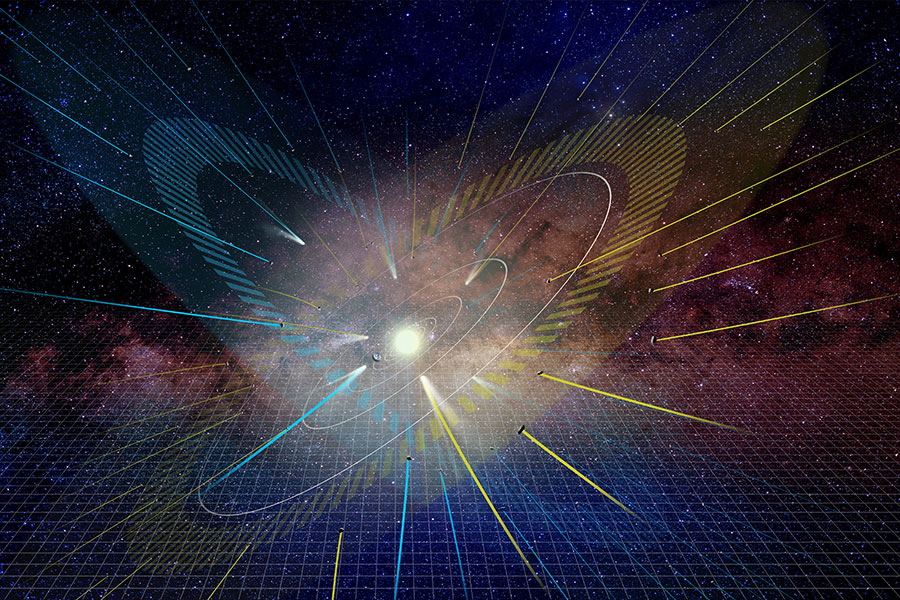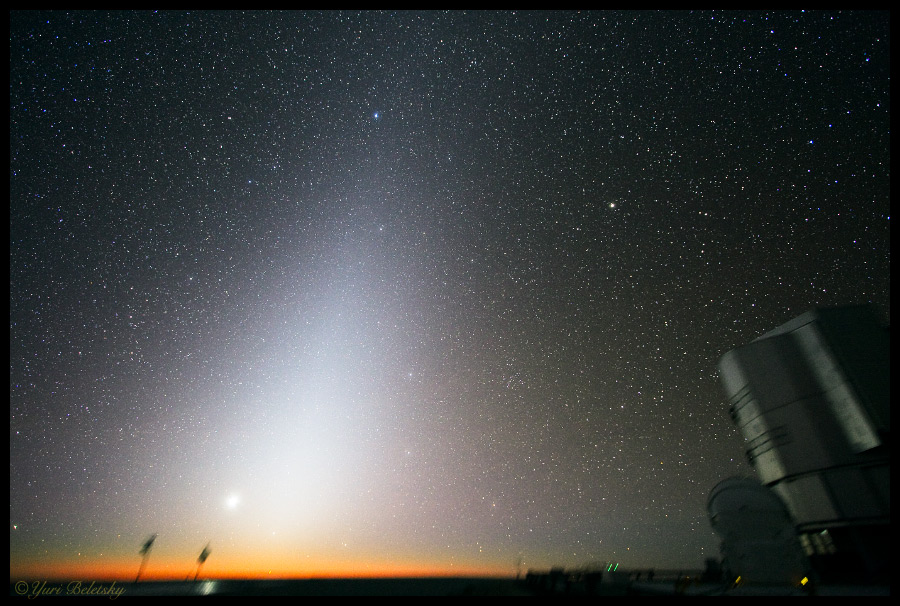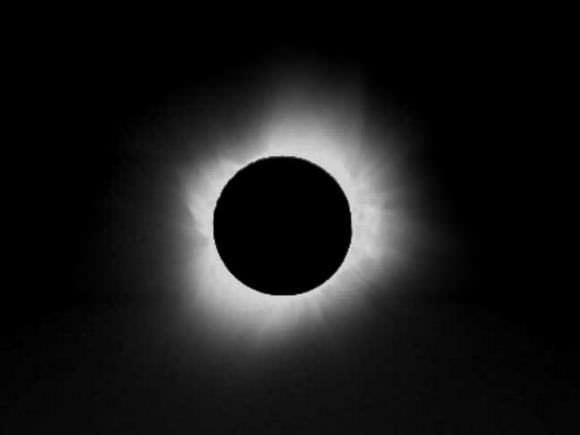[/caption]
Imagine you could see the position of the Sun, in the sky, relative to the stars (and galaxies, and quasars, and …). If you could, and if you plotted that position throughout the year you’d get a line; that line is called the ecliptic.
And why is it called the ecliptic? Because when the new or full Moon is very close to this, there will be an eclipse (of the Sun, and Moon, respectively).
The Earth goes round the Sun, in an orbit. That orbit defines a plane, which is an infinite two-dimensional sheet; the plane of the ecliptic.
The other planets in the solar system orbit the Sun in planes too, but those planes are slightly tilted with respect to the plane of the ecliptic … so transits of Venus (across the Sun) are quite rare (most times Venus passes either above or below the Sun, when it’s between Earth and the Sun). Mutual transits and occultations of planets are even rarer.
If you’re in a location relatively free of light pollution, on a clear, moonless night you may see zodiacal light. If you trace a line through the middle of it, you’re tracing the ecliptic (zodiacal light is due to reflection of sunlight off dust; dust in the solar system is concentrated in a plane close to the ecliptic plane).
Today astronomers use equatorial coordinates to give positions on the sky, right ascension (RA) and declination (Dec); these are like projections of longitude and latitude out into space (or onto the celestial sphere). However, in Europe ecliptic coordinates were used (up to the 17th century anyway). Here’s a curious fact: historically, Chinese astronomers used equatorial coordinates!
Universe Today stories: Plane of the Ecliptic, Vernal Equinox – Busting the Myth of Balancing Eggs, and Find the Zodiacal Light.
More: Astronomy Cast on Orbit of the Planets, and a Glow After Sunset.



